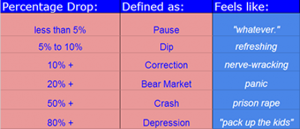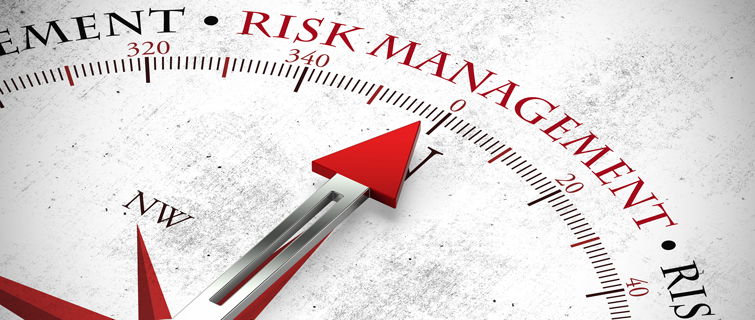Most corrections do not become crashes, and (here’s the key…) every single one of them turned out to have been great buying opportunities in the fullness of time.
In fact corrections are nothing more than a pause between the market’s long steady upward moves. The distinction between volatility and risk is at the heart of long term equity investing because markets tend to move in long upward trending sine waves.
THE FUNDAMENTALS ARE FULLY INTACT: Keep in mind that corporate profits are strong, the US economy is growing slowly – but growing nonetheless – and the balance sheets of homeowners and corporations are now rebuilt. Interest rates are low and will stay low – which means corporate borrowings are cheap, and there are no attractive alternatives to equity investing.
We would like to walk you through what these terms actually mean and give you some context before you encounter the almost-guaranteed hysterics of the financial commentariat.

- Since the end of World War II (1945), there have been 27 corrections of 10% or more, versus only 12 full-blown bear markets (with losses of 20% +).
- * This equates to one correction roughly every 20 months, according to Dow Jones index maven John Prestbo, who points out that this average does not mean they’re evenly spaced out. 25% of these corrections over the last 66 years occurred during the 1970′s (the Golden Age of Market Timers), another 20% occurred during the secular bear market of 2000-2010.
- The average decline during these 27 episodes has been 13.3% and they’ve taken an average of 71 days to play out (just over three months).
- From the beginning of the last secular bull market in 1982 through the 1987 crash, there was just one correction of 10% or more. Between the Crash of 1987 and the secular bull market’s peak in March 2000, there were just two corrections, according to Ed Yardeni. This means that secular bull markets can run for a long time without a lot of drama.
- Since the stock market’s bottom in March of 2009, there have been only 3 corrections: In the spring of 2010 the S&P 500 began a 69-day drop of roughly 16%. The widely referenced summer correction of 2011 lasted for about 154 days and almost became a bear market. The correction during the spring of 2012 set up one of the greatest rallies of all time, although it was barely a real correction, sporting a peak-to-trough drop of just 9.9% in just under 60 days.
- The most recent correction took place in 2011, between the end of April into the end of September. The Dow dropped roughly 16%. The S&P 500 actually dropped a hair over 20% before snapping back, leading some to believe that this was a bear market – the implication being that the current bull market is just 2 years old and not five years old (dating from March of 2009).
- Bull market rallies in between corrections – and there have been 58 in the post-war period – tend to run for an average of 221 trading days before being interrupted and gaining an average of 32%. By this standard, we are way overdue for a correction.
- As to what we should do during corrections, RVW should observe the 2 magic words: IGNORE THEM. The best thing to do is grit one’s teeth and do nothing.
Remember: History is solidly on the side of the bulls.
- As to the question of whether a correction could become a bear market (or worse even,a crash), the answer is that this is always possible. But most corrections do not become crashes, and every single one of them turned out to have been great buying opportunities in the fullness of time.
IMPORTANT: This website is only intended for clients and interested investors residing in states in which the Adviser is qualified to provide investment advisory services, and is not an invitation to invest. Please contact us to find out if we are qualified to provide investment advisory services in the state where you reside and to learn more about what we do.
THIS INFORMATION IS BELIEVED BY US TO BE ACCURATE BUT MAY CONTAIN ERRORS. IT IS GENERIC AND MAY NOT BE SUITABLE TO YOUR PARTICULAR SITUATION. DO NOT RELY ON IT. NEVER INVEST WITHOUT CAREFULLY REVIEWING OFFERING DOCUMENTS, ON WHICH ALONE YOU SHOULD RELY. ALL INVESTING ENTAILS RISK. CAPITAL NOT GUARANTEED.

